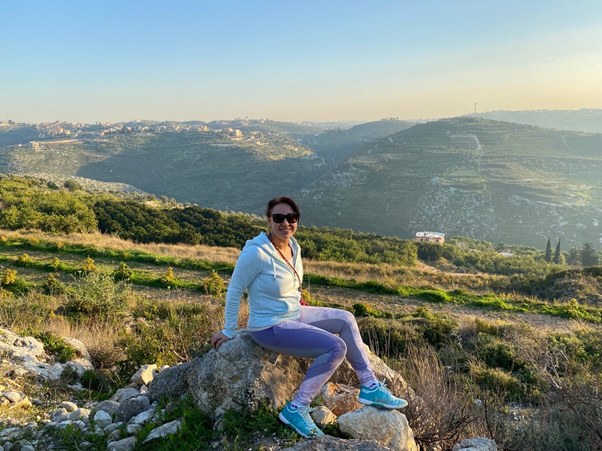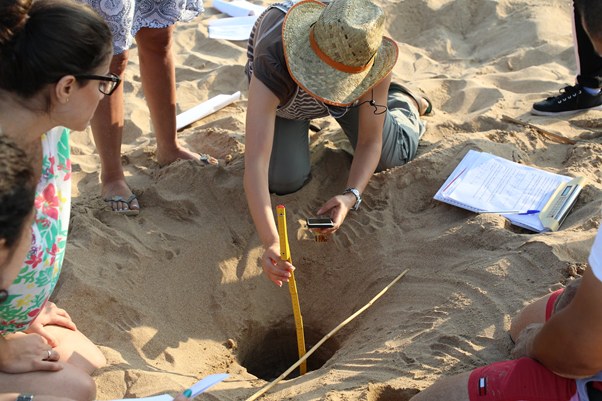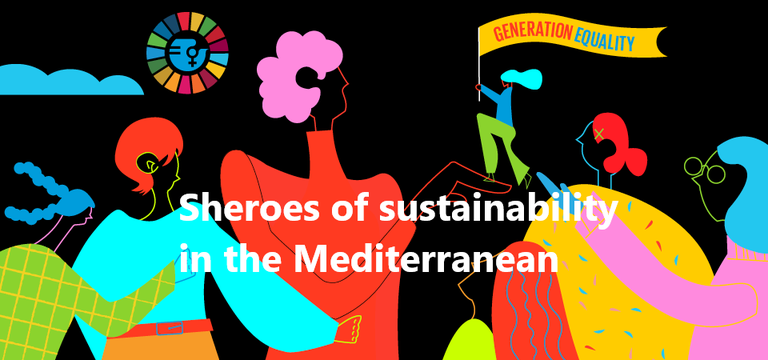The head of Marine Protected Areas (MPAs) who brings marine sustainability to the shore
The Tyre Coast nature reserve in Lebanon has been included in the List of Specially Protected Areas of Mediterranean Importance (SPAMI List) since 2013. The reserve was the subject of a study in 2019 to determine if it still meets the criteria of Annex I of the SPA / BD protocol, including those related to management. The study identified several issues and the reserve was placed in a “period of a provisional nature” - a technical term used to refer to sites that need to improve management within a predetermined time frame to maintain the SPAMI label. Since then, Tyr's management team has worked Tirelessly to address the gaps, including through an updated management plan. “It was very hard, we got there with difficulty,” confirms Ms. Nahed Msayleb, Director of the reserve since 2018.
 Prior to taking the reins, Ms. Msayleb had been a member of the reserve committee for 15 years. “The reserve inspired me to do a master's degree in environmental engineering,” she says, speaking of her continued fascination with the site's natural beauty and unique biodiversity. She decided from the start that her mission was to steer the reserve towards sustainability while taking into account social, economic and environmental aspects. "I base all my proposals, all my projects and activities on these three pillars, because I understand that any attempt by omitting one of them would be doomed to failure."
Prior to taking the reins, Ms. Msayleb had been a member of the reserve committee for 15 years. “The reserve inspired me to do a master's degree in environmental engineering,” she says, speaking of her continued fascination with the site's natural beauty and unique biodiversity. She decided from the start that her mission was to steer the reserve towards sustainability while taking into account social, economic and environmental aspects. "I base all my proposals, all my projects and activities on these three pillars, because I understand that any attempt by omitting one of them would be doomed to failure."
For Ms. Msayleb, the ASPIM label is an important asset. It contributes to making known the threatened natural heritage of the site and to mobilizing the human and financial resources necessary for its safeguard. “Several studies have already been carried out and will serve as the basis for the new management plan, which is the basis for the management and development of the reserve”. The studies focus on the state of ecosystems, the large bird population, but also on the use of natural resources and socio-economic issues.
Ms. Msayleb also explained that projects benefiting from SPAMI generally help to better preserve and manage natural heritage but can also stimulate the local economy. She mentioned the COMMON Project, focused on marine litter management, and the MED4EBM Project, the Mediterranean Forum for Applied Ecosystem-Based Management within the framework of the ENI CBC Med Program. As part of the IMAP-MPA Project, Ms. Msayleb and the reserve team are fully involved in updating the management plan for the Côte de Tyre nature reserve and its effective implementation (the MPA component of the IMAP-MPA project is executed by UNEP / PAM-SPA / RAC and financially supported by the European Union).
For Ms. Msayleb, the dialogue with fishermen for the promotion of sustainable fishing in Tyre is crucial: "the practice has made them see and touch the tangible benefits of sustainability", she said, citing the Drosos Project implemented. work by IUCN in cooperation with the association of local fishermen in Tyre.
 The Director aspires to replicate the success with other stakeholders at sea and on land in the rural area of the reserve. "By promoting sustainable agriculture, we are trying to create a set of agricultural guidelines that farmers in Ras El Ain can use to provide healthier products." The acquisition of a sustainability label brings added value to the product, making it more marketable and therefore more profitable.
The Director aspires to replicate the success with other stakeholders at sea and on land in the rural area of the reserve. "By promoting sustainable agriculture, we are trying to create a set of agricultural guidelines that farmers in Ras El Ain can use to provide healthier products." The acquisition of a sustainability label brings added value to the product, making it more marketable and therefore more profitable.
Sometimes, Msayleb observes, there is resistance to ideas that can be rooted in gender biases. But she remains determined to pursue her vision of the reserve. Its priority remains to engage effectively with natural resource users and all stakeholders. “If you don't consider the local community, the MPA may look like a paradise, but it will fail to fulfill its objective of ensuring sustainable local development in harmony with nature,” she observes with insight.
For more information : Facebook page of the Tyre Coast Nature Reserve
The views expressed do not necessarily represent the decision or the stated policy of the United Nations Environment Programme

